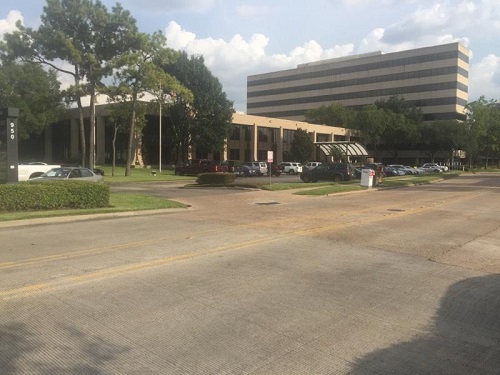Since the discovery of appendicitis a century before, the gold standard for treating appendicitis is the appendectomy (1). The surgical process through which an appendix is removed is known as appendectomy. Usually, the surgical removal of an appendix is carried out when there is an emergency to manage an inflamed appendix (2). Appendectomy come among the most common surgeries performed in the United States to manage acute appendicitis (3). Globally, acute appendicitis is also a commonly managed condition through surgery prevailing in one hundred and sixty individuals out of one hundred thousand in the Middle East while the prevalence accounts for two hundred and six individuals out of one hundred thousand in Asia (4,5).
INDICATIONS
Appendectomy is used to treat uncomplicated and complicated appendicitis, suspected appendicitis, Crohn’s disease in the appendix, diverticulosis of the appendix, and the neoplasm of the appendix (6). When the vermiform appendix becomes inflamed, it results in appendicitis (7). Moreover, a safe, definitive, and effective option for managing non-perforated appendicitis is appendectomy (8–10). Immediate surgery in patients with abscesses, phlegmon, and symptoms persisting for a longer duration should be avoided. This is because inflammation and dense adhesions are likely to be present in these patients that have a link with higher morbidity (11).
Immediate appendectomy needs to be performed contingent upon percutaneous drainage of the abscess is not possible. Moreover, an appendectomy also needs to be performed in an emergency in case of perforated appendicitis when the instability of sepsis results from free perforation of the appendix. This is executed as a means of rescue appendectomy when preliminary non-invasive treatment with percutaneous drainage or antibiotics does not bear fruitful outcomes or on condition, if the size is small of the appendiceal abscess or the abscess is inaccessible for drainage percutaneously due to its large size(12).
PROCEDURE STEPS
Appendectomy is performed in two ways; open appendectomy and laparoscopic appendectomy. The gold standard is open appendectomy while laparoscopic appendectomy is a newer but less invasive procedure.
- Open Appendectomy: The incision is made obliquely through McBurney’s point in the right iliac fossa. This permits a way into the appendix base regardless of the tip location. As an alternative, preoperative imaging can be used to help in making the incision at the point where tenderness is maximum or appendiceal location. Scalpel is used to cut dermis and epidermis. The external aponeurosis is dissected by using electrocautery and blunt dissection. In a manner from superolateral to inferomedial, the external aponeurosis is opened along their fibers to uncover the internal underlying oblique muscle. These muscles are then cut perpendicularly directed towards its fibers to uncover the transverse muscles of the abdomen which are then cut similarly to uncover the peritoneum (13).
With forceps, the surgeon grips the peritoneum and with a 15-blade knife, a cut is made. Now, attention is concentrated on pinpointing the appendix. If the cecum is visible, it can be taken as a guide to recognizing the appendix. Taenia coli is gripped using atraumatic graspers and extended until externalization of the appendix is achieved. As an alternative, the appendix can be located by sweeping the fingers in the surroundings of the cecum starting superolateral and going on anteromedially. Once recognized, dissection of the mesoappendix is done, the clamp is used to divide the appendiceal vessels, and silk sutures are used to ligate them. Absorbable sutures or any other as per the surgeon’s preference are used to close the skin (14).
- Laparoscopic Appendectomy: A 12mm incision is made infra umbilically and either using the Hasson technique or a Veress needle, carbon dioxide gas is used to inflate the stomach and then an angled laparoscope of size 5mm is inserted. Then above the pubic bone, a 5mm port is positioned and the second port of the same size is then positioned in the lower left section laterally. From the port placed laterally, a laparoscope is introduced. The midline ports are used by the surgeon to operate (15).
COMPLICATIONS
The mortality rate linked with appendectomy is small and hence deliberated as a safe practice. The common complications include infection at the site of surgery either a simple infected wound or an intra-abdominal abscess. The chances of occurrence are more in patients with perforated appendicitis (16).
Sources
- Sallinen V, Akl EA, You JJ, Agarwal A, Shoucair S, Vandvik PO, et al. Meta-analysis of antibiotics versus appendicectomy for non-perforated acute appendicitis. Br J Surg. 2016 May;103(6):656–67.
- John Hopkins Medicine. Appendectomy [Internet]. 2019 [cited 2022 Aug 6]. Available from: https://www.hopkinsmedicine.org/health/treatment-tests-and-therapies/appendectomy
- Addiss DG, Shaffer N, Fowler BS, Tauxe RV. The epidemiology of appendicitis and appendectomy in the United States. Am J Epidemiol. 1990 Nov;132(5):910–25.
- Ferris M, Quan S, Kaplan BS, Molodecky N, Ball CG, Chernoff GW, et al. The Global Incidence of Appendicitis: A Systematic Review of Population-based Studies. Ann Surg. 2017 Aug;266(2):237–41.
- Sartelli M, Baiocchi GL, Di Saverio S, Ferrara F, Labricciosa FM, Ansaloni L, et al. Prospective Observational Study on acute Appendicitis Worldwide (POSAW). World J Emerg Surg. 2018 Apr 16;13(1):19.
- Barlow A, Muhleman M, Gielecki J, Matusz P, Tubbs RS, Loukas M. The vermiform appendix: a review. Clin Anat N Y N. 2013 Oct;26(7):833–42.
- Jones MW, Lopez RA, Deppen JG. Appendicitis. In: StatPearls [Internet]. Treasure Island (FL): StatPearls Publishing; 2022 [cited 2022 Aug 6]. Available from: http://www.ncbi.nlm.nih.gov/books/NBK493193/
- Schuster KM, Holena DN, Salim A, Savage S, Crandall M. American Association for the Surgery of Trauma emergency general surgery guideline summaries 2018: acute appendicitis, acute cholecystitis, acute diverticulitis, acute pancreatitis, and small bowel obstruction. Trauma Surg Acute Care Open. 2019;4(1):e000281.
- Di Saverio S, Podda M, De Simone B, Ceresoli M, Augustin G, Gori A, et al. Diagnosis and treatment of acute appendicitis: 2020 update of the WSES Jerusalem guidelines. World J Emerg Surg WJES. 2020 Apr 15;15(1):27.
- Rushing A, Bugaev N, Jones C, Como JJ, Fox N, Cripps M, et al. Management of acute appendicitis in adults: A practice management guideline from the Eastern Association for the Surgery of Trauma. J Trauma Acute Care Surg. 2019 Jul;87(1):214–24.
- Mentula P, Sammalkorpi H, Leppäniemi A. Laparoscopic Surgery or Conservative Treatment for Appendiceal Abscess in Adults? A Randomized Controlled Trial. Ann Surg. 2015 Aug;262(2):237–42.
- Cheng Y, Xiong X, Lu J, Wu S, Zhou R, Cheng N. Early versus delayed appendicectomy for appendiceal phlegmon or abscess. Cochrane Database Syst Rev. 2017 Jun 2;6:CD011670.
- Cavalli M, Bruni PG, Lombardo F, Morlacchi A, Andretti Amodeo C, Campanelli G. Original concepts in anatomy, abdominal-wall surgery, and component separation technique and strategy. Hernia J Hernias Abdom Wall Surg. 2020 Apr;24(2):411–9.
- Okamoto S, Otowa Y, Fujinaka R, Arai K, Murata K, Mii Y, et al. Purse-string suture after ligating by end loop for the closing of the appendiceal stump is an alternative for endo stapler in selected cases: A propensity score-matched study. Asian J Endosc Surg. 2021 Oct;14(4):775–81.
- Ferzli GS, Fingerhut A. Trocar placement for laparoscopic abdominal procedures: a simple standardized method. J Am Coll Surg. 2004 Jan;198(1):163–73.
- Lemieur TP, Rodriguez JL, Jacobs DM, Bennett ME, West MA. Wound management in perforated appendicitis. Am Surg. 1999 May;65(5):439–43.


